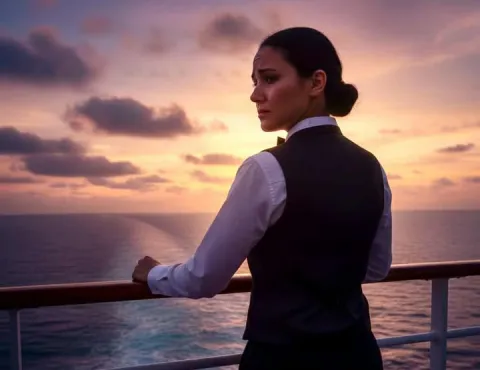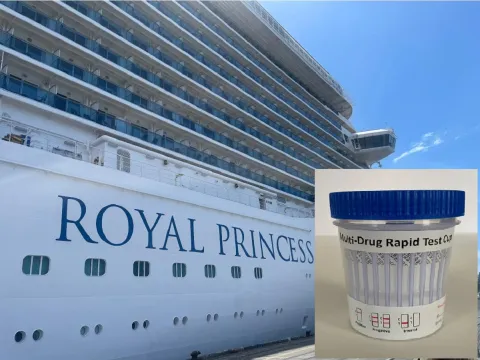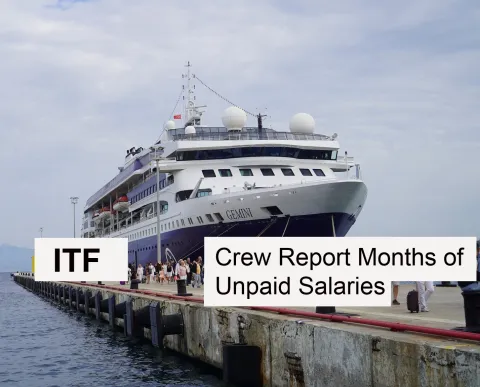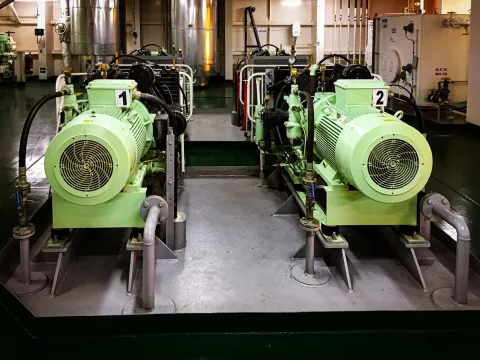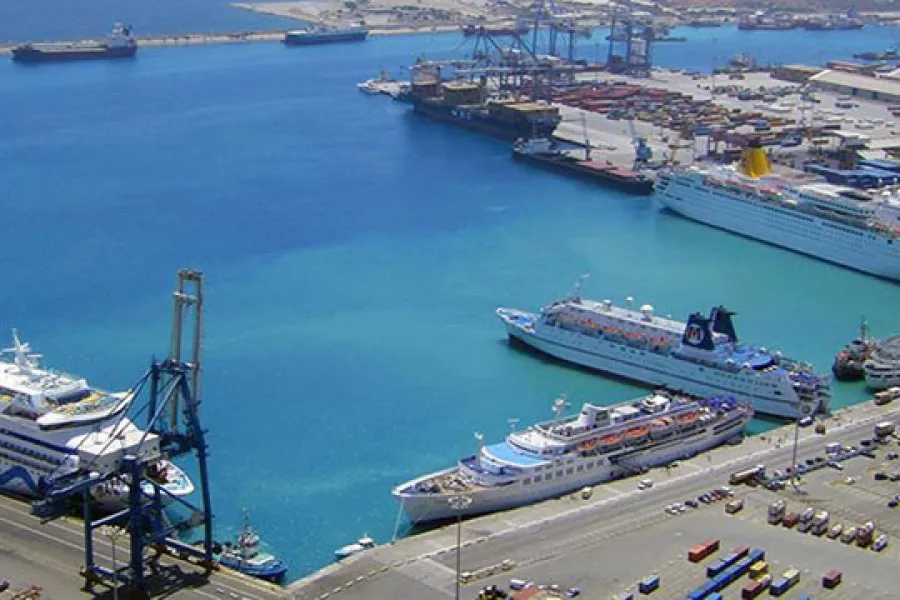
While I was working cruise ship, I loved the small ship vibe more than a big ship. That was just my impression, something that I felt. On the small ship, as an employee, I felt more sense of belonging and synergy between the crew members and a more family atmosphere. When I say family atmosphere, yes, you read it correctly. On the seven seas, our fellow colleagues quickly become our extended family; those people usually become close to our hearts forever. While working on the big ships, sometimes I would meet up with fellow crew members only after four months on board; we never saw each other for four months due to ship size and different working schedules. In the way, big ships are usually bigger in passenger areas, entertainment quality, and many other things, but my crew cabin was the same size, regardless if I worked on a small or biggest ship in the fleet. That said, it did not make much difference in the quality of my life on board. Food is the same regarding crew members on small or big ships. For the passengers, a big ship means more buffet options, a seafood section, a burger and salad bar, and many other additional places.
Cruise ships are all different, and size is a factor in finding the ocean cruise experience that is right for you. The ship's size influences the cruising style and whom you cruise with. It also affects where you can go.
Big ships carrying up to 8000 passengers visit popular, tried-and-true ports of call in places such as the Caribbean, Mexican Riviera, Mediterranean, and Alaska. On board, they have all the attributes of small cities or expansive resort places such as Walt Disney World and Las Vegas. You may need to put on sneakers to explore. Many have waterslides, restaurants (some for an extra fee), and bars abound, as do nightclubs and lavish casinos, providing a frenetic pace day and night.
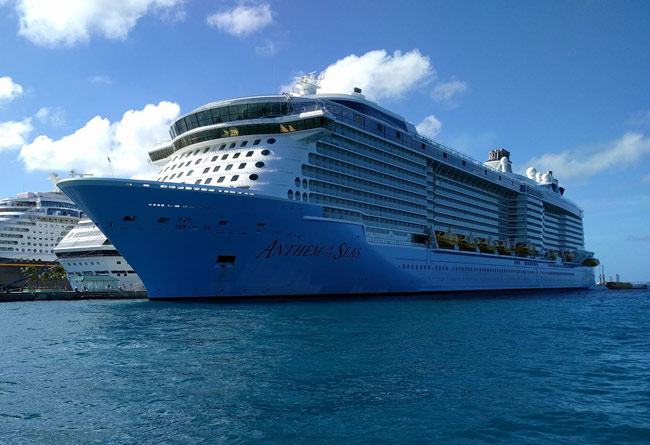
By contrast, small ships carrying 800 or fewer passengers focus more on the experience of being at sea, in a social setting, with great food and drink and time in port, including late-night stays and overnights, to dive into the local culture. You call at less-visited places worldwide, such as a remote Tahitian village or a tiny Greek isle, in addition to extraordinary marquee places. Often, port stops have a feeling of visiting someplace wonderfully undiscovered.

Choosing between a big ship and a small ship is akin to choosing between a huge department store or a small local shop, staying at big name-brand convention and resort hotels, or a small boutique property.
Who is on board?
Big ships are designed for guests of all ages; the focus is something for everyone. Hundreds (and sometimes more) kids and teens on board may hang out in expansive playrooms with age-appropriate activities while the thousands of adults on board jostle for lounge chairs near the lively and sometimes raucous pool scene, complete with music and games, or in particular quieter adults-only sun areas (some for a fee). Passengers choose from a long roster of grownup activities, day and night. The idea is plenty to do to keep everyone happy. The size of the ships means that sometimes you will encounter crowds and lines.
By contrast, small ships, like those of Windstar, tend to host a social bunch of adults, couples, and solo travelers, who are curious and looking to learn more about the world. Guests tend to want to kick back and enjoy their own time at sea, sunning, reading, dipping in the hot tubs, or simply enjoying the ocean breezes and views from the broad teak decks – and in the case of sailing ships, looking up to tens of thousands of feet of beautiful billowing sails. When they do venture indoors, it is for cerebral pursuits such as a lecture by a historian or naturalist. Cocktails and dining are social events. You won't feel lost in a crowd. You might find yourself pretending you are on your own private yacht.
Entertainment and activities
During the day on big ships, the activity list is long: contests and games, lectures (including on such topics as shopping and how to eliminate body fat), cooking classes, cocktail- and wine-tastings, scavenger hunts, and anything else the cruise directors and entertainment team can think up – even parades in the promenade on some mega-ships. At night, big ships offer live music in several watering holes and extravagant show productions with singers, dancers, lavish costumes, and sometimes acrobats flying down from the ceiling. Both the casino and nightclubs attract a late-night crowd. A couple of nights a week on some ships, guests are encouraged to wear suits or tuxes, cocktail dresses, or ballgowns, which can fill a suitcase.
Small ships with only a few hundred passengers are decisively more laidback. In a convivial, relaxed, unpretentious atmosphere, guests often prefer to entertain themselves, whether simply getting to know their fellow guests and the crew or enjoying the sea views while reading a book. Some attend fitness and yoga sessions or book a massage. Thanks to an open-bridge policy, passengers may hang out with the officers on Windstar ships and discuss navigation. Inside, the vessel is airy and contemporary, with nautical features such as real brass and a marine color scheme, a perfect place to regale fellow passengers about your past travel experience.
Food selection
On big ships, huge main dining rooms focus on menus offering something for everyone, with ingredients stocked from a warehouse. Guests may choose between assigned seating (you dine at a set time with the same people each night) or open seating at any time, which may require making a reservation or waiting in line. Finding a table for two in the dining room is rare. Specialty restaurants charge a fee for more intimate spaces and more honed menus – such as venues serving steakhouse, Asian, or Italian cuisine. If you want room service, you may have to pay a fee.

On small ships, in intimate dining rooms, where you can dine each night when and with whom you like, fresh local ingredients (some of which may have been purchased that day) are featured in international dishes and even regional dishes inspired by your cruising destination.
The biggest cruise ships can be phenomenal. These mega-liners are filled with fantastic features that may include dozens of bars and restaurants to choose from, luxury spas offering the most exotic treatments, expansive gyms with specialty classes, multiple pools and whirlpools, and a wide range of unique attractions such as ice rinks, bumper cars, 3D theaters, indoor skydiving, zip lines, robot bartenders and more.
With so much to see and do right on board the ship, one of these larger vessels can be ideal for a diverse group of passengers or anyone whose idea of a great vacation is one big adventure with something new around every corner.
But there are drawbacks to these humongous cruise ships. Part of being bigger is accommodating more passengers, and with 4,000-8,000 or more passengers on board, lines can be long, and the ship may feel more crowded.
Fares for these ships can also be higher because of the demand to try out all the latest features, making the vacation more expensive no matter where the ship may be traveling.
What you do in port
Big ships sell shore excursions for the masses. Even on tours focused on small groups, passengers at the pier face crowds trying to find the correct bus or guide. At ports where big ships cannot dock, passengers tend (on small boats) to get ashore, and you may have delays. Going off alone may involve jostling for a cab or even waiting in line to leave the ship and pier area. With thousands of people coming off the ship, some ports will have more cruise passengers in town than residents. The logistics of moving the crowd may limit your stay in port.
Small ships eliminate the crowd factor.
To conclude, big ships are only better for passenger entertainment. But for the quality of the crew members' life on board, it does not make much difference, especially if your title is only "crew" rather than "staff member," like I used to be.
Crew Insights
Articles and experiences shared by crew members working on cruise ship. Find out more about ship life at sea together with tips and advices for first time crew members and cruise oldtimers.





